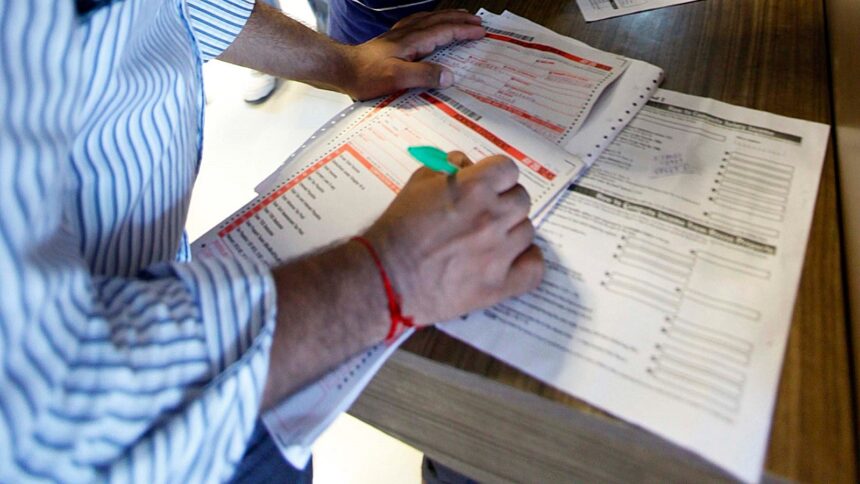The Income Tax (I-T) Department has notified income tax returns for assessment year 2025-26 (financial year 2024-25) enabling the filing of returns effective April 1. This year onwards, the tax department has included a provision to file details of long-term capital gains within the ITR-1 and ITR-4 formats.
Earlier, taxpayers filing ITR-1 had to file the details of capital gains in ITR-2 separately. Taxpayers are required to file details of capital gains where the assessee has only long-term capital gains under section 112A not exceeding Rs 1.25 lakh and does not have any brought forward loss or loss to be carried forward.
Ease of filing LTCG
The I-T Department, which functions under the Central Board of Direct Taxes (CBDT), will soon operationalise the filing functionalities for the commonly used segments ITR-1 Sahaj and ITR-4 Sugam. ITR-1 can be filed by an individual having income up to Rs 50 lakh and who receives income from salary, one house property, other sources (interest, etc), long-term capital gains under section 112A up to Rs 1.25 lakh, and agricultural income up to Rs 5,000.
Section 112A of the Income-tax Act provides for the taxation of long-term capital gains (LTCG) arising from the sale of listed equity shares, equity-oriented mutual funds, and units of business trusts. A long-term capital gain is the profit earned from the sale of shares or other assets when they are held for more than 12 months (for listed securities) or 24 months (for other assets) at the time of sale.
ITR-4 can be filed by individuals, Hindu Undivided Families (HUFs) and firms with total income up to Rs 50 lakh, having income from business and profession, and having long-term capital gains under section 112A upto Rs 1.25 lakh.
Sandeep Sehgal, Partner-Tax, AKM Global, a tax and consulting firm said, “Previously, any LTCG under Section 112A, regardless of the amount, necessitated the use of the more complex ITR-2 form. With the latest amendments, individuals can now utilise the simpler ITR-1 (Sahaj) or ITR-4 (Sugam) forms if their LTCG under Section 112A does not exceed Rs 1.25 lakh and they have no capital losses to carry forward or set off. This change streamlines the tax filing process, making it more accessible and less burdensome for small investors and salaried individuals, thereby encouraging timely and accurate compliance.”
Details sought by Income Tax Department in ITR
Apart from disclosing the income earned from various sources, taxpayers need to provide details of any expenditure over Rs 2 lakh for travel to a foreign country for self or for any other person in the ITR.
Any expenditure of over Rs 1 lakh incurred on consumption of electricity during the previous year should also to be declared in the tax return.
Taxpayers must also disclose the deposit of an amount or aggregate of amounts of over Rs 1 crore in one or more current accounts during the previous year while filing ITR.
Importance of AIS and Form 26AS
In addition, while filing the income tax return, the detailed summary through Annual Information Statement (AIS) and Form 26AS is available to the taxpayer, who can either accept it as correct, or provide feedback if there are discrepancies.
The AIS is a summary of a taxpayer’s financial transactions given in Form 26AS, which contains details of all Tax Deducted or Collected at Source (TDS/) along with other details regarding interest, dividend, and and mutual fund transactions.
Since AIS includes details of financial transactions from reporting entities, the information will be available only after it gets updated from reporting entities such as banks and financial institutions. Similarly, Form 26AS gets updated after the I-T Department processes the TDS returns.
Since the last date for filing TDS returns for the January-March quarter is May 31, the updated information is available only in the first week of June. Taxpayers can file their ITR at .








